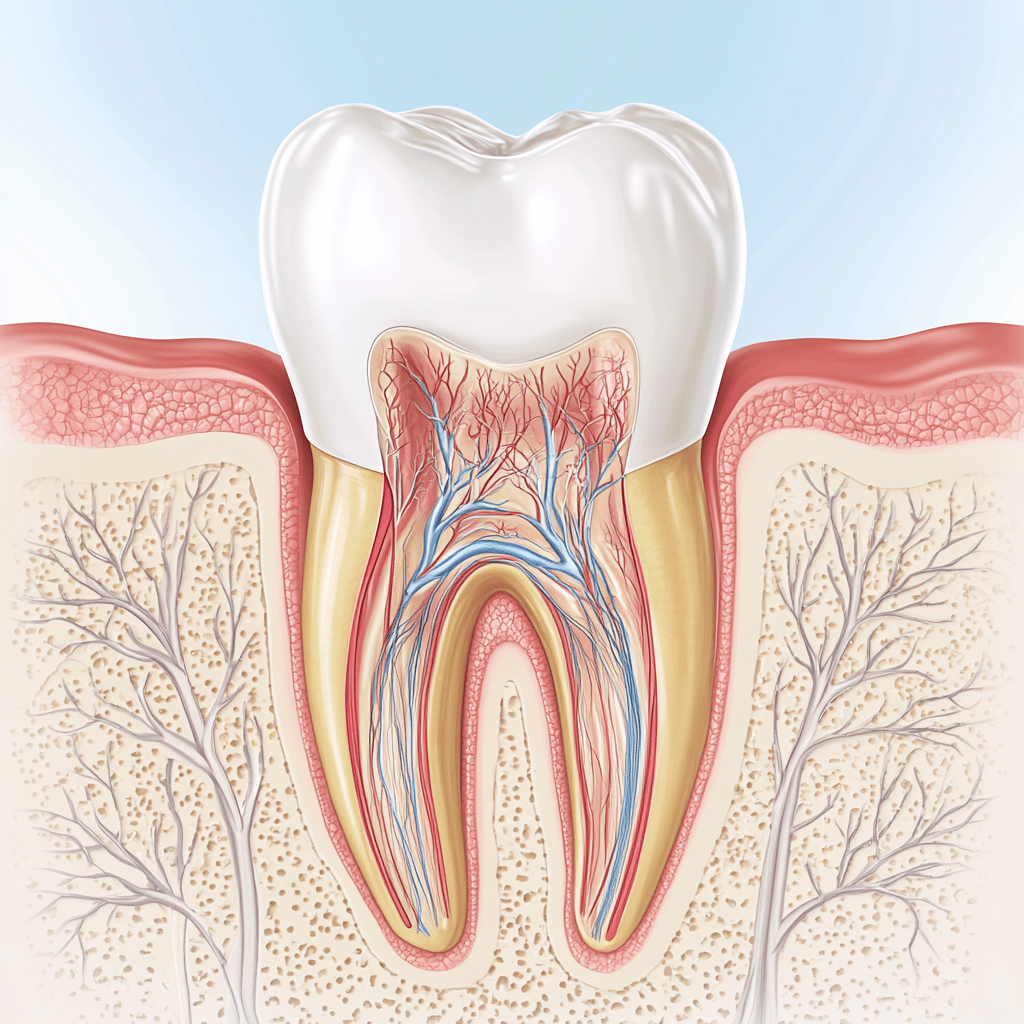Root Canal Treatment
Understanding Root Canal Treatment: A Comprehensive Guide to Saving Your Tooth
Root canal treatment is a highly effective procedure designed to save a tooth that would otherwise need to be extracted. This comprehensive guide will help you understand the process, benefits, and what to expect, ensuring you make informed decisions about your oral health.
Understanding Root Canal Treatment
Root canal treatment is a critical procedure in modern dentistry aimed at preserving your natural teeth. Despite common fears, advancements in dental technology have made root canals more comfortable and effective than ever before.
Introduction to Root Canal Treatment
Root canal treatment is a dental procedure that often evokes a sense of fear and anxiety, largely due to misconceptions and myths surrounding it. However, the truth is that root canal treatment is a highly effective and often pain-relieving procedure designed to save a tooth that would otherwise need to be extracted. If you're facing the prospect of a root canal, understanding what the procedure involves and how it can benefit your oral health is essential.
What is Root Canal Treatment?
Root canal treatment is a pivotal procedure aimed at saving a tooth that might otherwise require extraction. By addressing the root of the problem—hence the name—this treatment ensures long-term oral health and functionality.
What is Root Canal Treatment?
Root canal treatment, also known as endodontic therapy, is a procedure used to treat infection or damage in the inner part of a tooth, known as the pulp. The pulp contains nerves, blood vessels, and connective tissue, and plays a crucial role during the development of the tooth. However, once the tooth is fully grown, the pulp is no longer necessary, and the tooth can survive without it.
Causes of Pulp Damage
When the pulp becomes infected or damaged due to deep decay, a cracked tooth, or trauma, it can cause severe pain, abscess formation, and eventually lead to tooth loss. Root canal treatment is performed to remove the infected or damaged pulp, clean and disinfect the inside of the tooth, and then seal it to prevent further infection. This procedure allows the tooth to be preserved and continue functioning normally.
Why is Root Canal Treatment Necessary?
Understanding the necessity of root canal treatment helps in recognizing its importance in maintaining oral health. Let’s delve into the factors that can lead to the need for this procedure:
- Deep Tooth Decay: Cavities that are left untreated can penetrate deep into the tooth, reaching the pulp and causing infection.
- Cracked or Chipped Tooth: A tooth that is cracked or chipped can expose the pulp to bacteria, leading to infection.
- Repeated Dental Procedures: Multiple dental procedures on the same tooth can cause stress and irritation to the pulp.
- Tooth Trauma: A blow to the mouth or face can cause trauma to a tooth, leading to pulp damage.
- Gum Disease: Advanced gum disease can allow bacteria to reach the pulp through the root canals.
Why is Root Canal Treatment Necessary?
Root canal treatment is necessary when the pulp of a tooth becomes infected or inflamed. Several factors can lead to pulp damage, including deep tooth decay, cracked or chipped tooth, repeated dental procedures, tooth trauma, and advanced gum disease.
Signs and Symptoms That Indicate You May Need a Root Canal
Recognizing the early signs can make a significant difference in the success of root canal treatment. Common symptoms include:
- Severe Tooth Pain: Persistent, intense pain that worsens when you chew or apply pressure.
- Prolonged Sensitivity: Sensitivity to hot or cold that lingers long after the source is removed.
- Swollen Gums: Swelling, tenderness, or a small bump on the gums near the affected tooth.
- Discoloration of the Tooth: Darkened or discolored tooth may indicate internal damage.
- Gum Boil or Pimple: Appearance of a pimple-like bump on the gums near the affected tooth.
If you're experiencing any of these symptoms, it's crucial to seek prompt dental care. Delaying treatment can lead to more serious complications, including tooth loss and the spread of infection.
Signs and Symptoms That Indicate You May Need a Root Canal
It’s important to recognize the signs and symptoms that may indicate the need for a root canal. Early detection and treatment can prevent the infection from spreading and save your tooth.
The Root Canal Procedure: What to Expect
Understanding the steps involved in a root canal treatment can help reduce anxiety and prepare you for the procedure. Here’s what typically happens:
- Initial Examination and X-rays: Assessment of the tooth's condition.
- Anesthesia: Administration of local anesthesia to numb the area.
- Accessing the Pulp: Creating an opening in the tooth to reach the pulp chamber.
- Cleaning and Shaping the Root Canals: Removing infected pulp and disinfecting the canals.
- Filling the Root Canals: Sealing the canals with gutta-percha.
- Restoration of the Tooth: Placing a dental crown to restore functionality.
The Root Canal Procedure: What to Expect
The thought of undergoing a root canal may be intimidating, but understanding the procedure can help alleviate your concerns. Here’s a step-by-step overview of what you can expect during a root canal treatment:
Post-Treatment Care and Recovery
Aftercare is crucial to ensure the success of your root canal treatment. Follow these tips for a smooth recovery:
- Maintain Good Oral Hygiene: Continue to brush and floss your teeth regularly, being gentle around the treated tooth.
- Avoid Chewing on the Treated Tooth: Until your permanent crown is placed, avoid chewing on the side of your mouth with the treated tooth.
- Attend Follow-Up Appointments: Ensure that the tooth is healing properly and that your permanent restoration is placed correctly.
- Watch for Unusual Symptoms: Contact your dentist immediately if you experience severe pain, swelling, or other unusual symptoms.
Post-Treatment Care and Recovery
After your root canal treatment, it's normal to experience some mild discomfort or sensitivity for a few days. This can usually be managed with over-the-counter pain relievers, such as ibuprofen or acetaminophen. Your dentist may also provide you with specific instructions for caring for your tooth during the recovery period.
Benefits of Root Canal Treatment
- Pain Relief: Root canal treatment removes the infected or damaged pulp, which is the source of the pain.
- Preservation of the Natural Tooth: By preserving your tooth, you can maintain your natural bite and avoid the need for more invasive procedures.
- Improved Oral Health: Treating an infected tooth with a root canal helps prevent the spread of infection to other teeth and tissues.
- Aesthetic Restoration: After root canal treatment, the tooth can be restored with a crown that matches the color and shape of your natural teeth.
Benefits of Root Canal Treatment
Root canal treatment offers several important benefits, making it a preferred option for treating infected or damaged teeth. Some of the key benefits include:
Myths and Misconceptions About Root Canal Treatment
- Myth: Root Canals Are Painful.
Fact: Root canal treatment is designed to relieve pain, not cause it. - Myth: Root Canals Cause Illness.
Fact: There is no scientific evidence to support the claim that root canals cause illness. - Myth: Tooth Extraction Is a Better Option.
Fact: It is generally better to preserve your natural tooth with a root canal.
Myths and Misconceptions About Root Canal Treatment
Despite its effectiveness, root canal treatment is often misunderstood, leading to unnecessary fear and anxiety. Let’s debunk some common myths and misconceptions about root canals:
How to Prevent the Need for Root Canal Treatment
- Practice Good Oral Hygiene: Brush your teeth twice a day with fluoride toothpaste and floss daily.
- Visit Your Dentist Regularly: Regular dental checkups and cleanings are essential for early detection of dental issues.
- Protect Your Teeth from Injury: Wear a mouthguard during contact sports or activities that pose a risk to your teeth.
- Avoid Chewing on Hard Objects: Chewing on ice, hard candies, or other hard objects can crack or chip your teeth.
- Address Tooth Decay Early: Seek prompt treatment if you notice signs of tooth decay.
How to Prevent the Need for Root Canal Treatment
While root canal treatment is an effective way to save a damaged or infected tooth, it’s always best to prevent the need for such treatment in the first place. Here are some tips for maintaining good oral health and reducing your risk of needing a root canal:
External Links for Further Reading
- American Association of Endodontists: More information about root canal treatment and endodontics.
- Mayo Clinic: Learn about the root canal procedure and its benefits.
- WebMD: A detailed overview of root canal treatment.
Conclusion: Preserve Your Smile with Root Canal Treatment
Root canal treatment is a safe, effective, and often pain-relieving procedure that can save your tooth and protect your overall oral health. By addressing infection or damage within the tooth, root canal treatment helps you maintain your natural teeth and avoid more invasive dental procedures.
If you're experiencing symptoms that may indicate the need for a root canal, don't delay in seeking care. Early treatment can make all the difference in preserving your smile and preventing further complications.
Ready to restore your dental health? Contact us today to schedule a consultation and learn more about how root canal treatment can benefit you. Our experienced dental team is here to provide the highest quality care and ensure your comfort every step of the way.
Patient Testimonials
Discover what patients have to say about their experiences with our root canal treatments.
"I was terrified of getting a root canal, but the team made the process so comfortable and pain-free. My tooth feels great now!"
Emily R.
"Professional and caring staff. They explained every step of the root canal procedure, which helped ease my anxiety."
Michael S.
"Thanks to their expertise, my root canal was quick and painless. Highly recommend this dental practice!"
Sarah L.



